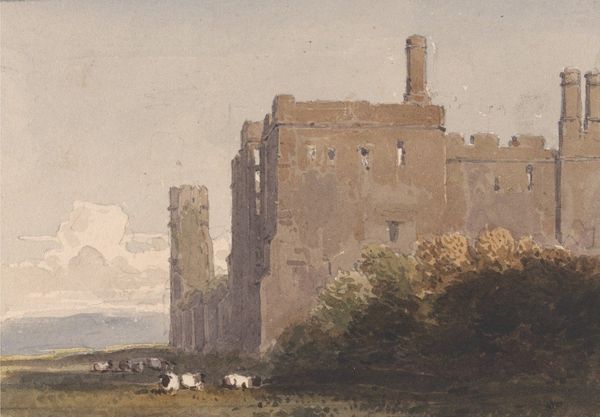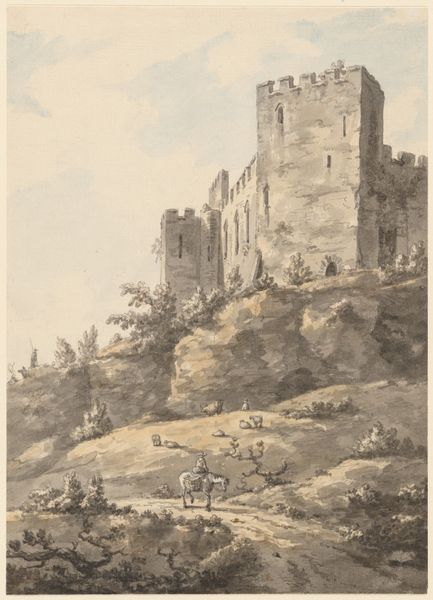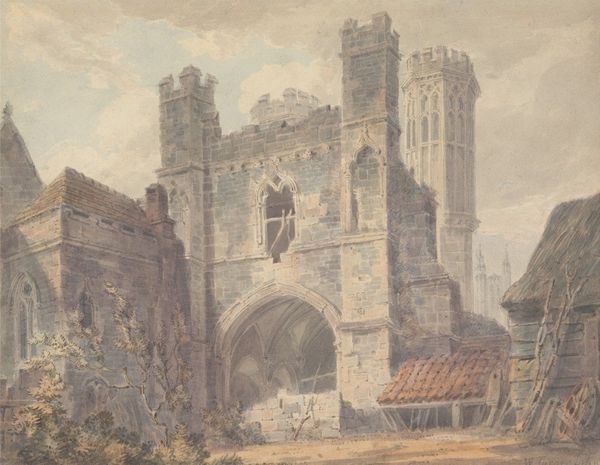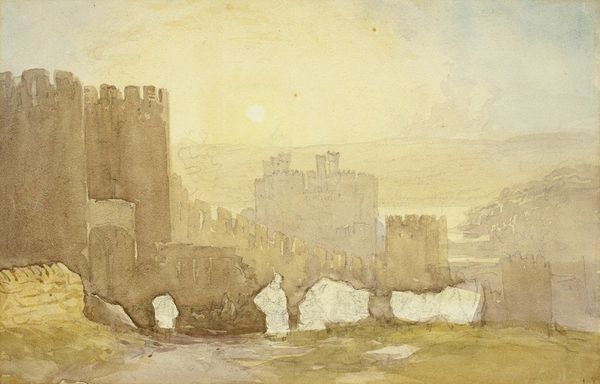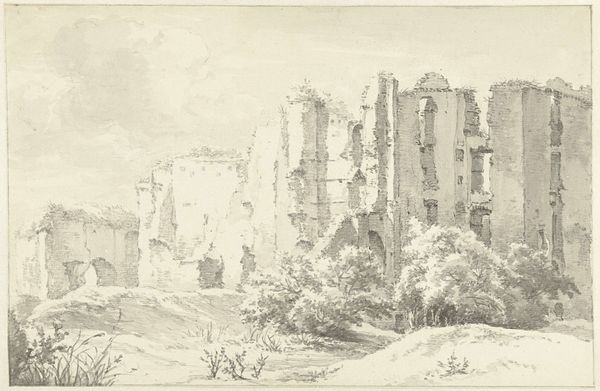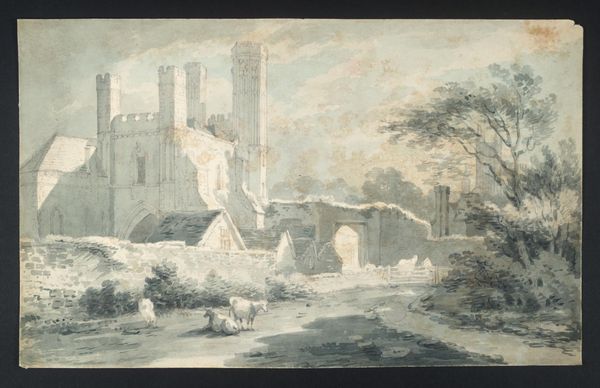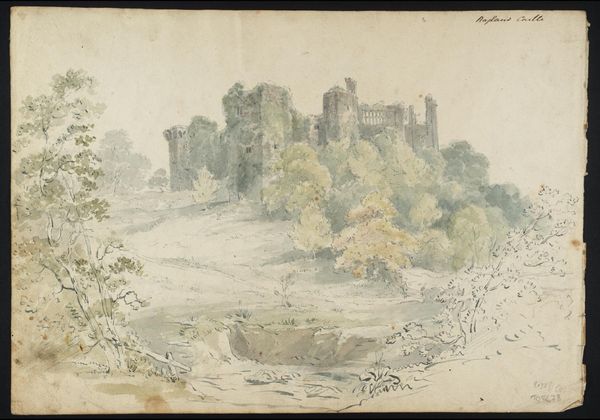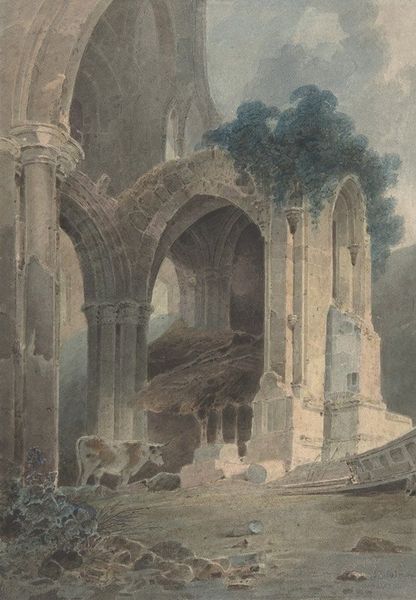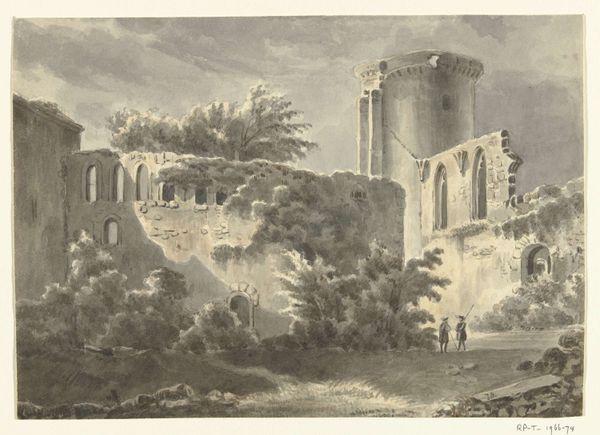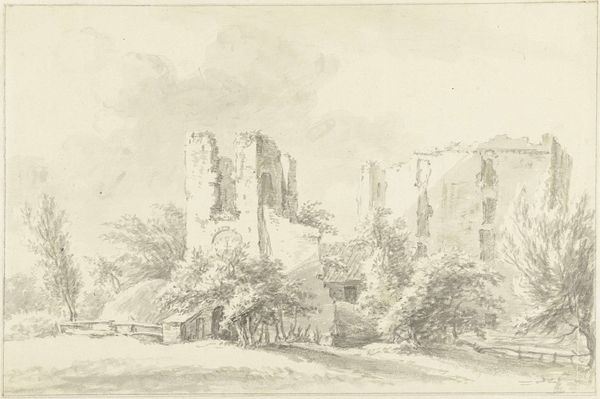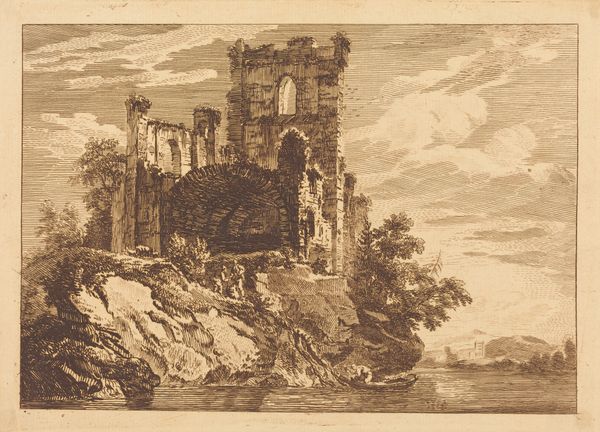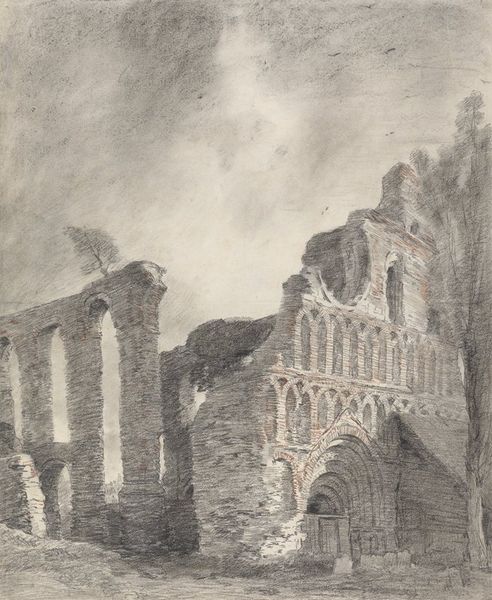
painting, watercolor, architecture
#
medieval
#
abandoned
#
painting
#
landscape
#
charcoal drawing
#
watercolor
#
intimism
#
romanticism
#
watercolor
#
architecture
Copyright: Public Domain: Artvee
Editor: This watercolor, "Castle Acre Priory, Norfolk," by John Sell Cotman, created around 1804, gives me a sense of quiet desolation. The ruins feel monumental, but also fragile. How do you interpret this work? Curator: I find this image so compelling because it makes me think about the labour that went into creating both the priory itself and Cotman's representation of it. Consider the quarrying of the stone, the skilled craftsmanship involved in the original medieval construction, and then the labor of decay – nature's persistent erosion. Editor: That's a perspective I hadn't considered! I was focusing on the Romantic aesthetic of ruins, but the actual *work*... Curator: Exactly. And look at Cotman's own artistic labor. The choice of watercolor suggests a certain lightness, almost an ease of production, but achieving this level of detail required skill and deliberate choices. The support, the pigments... Where did these materials come from? Who produced them? What’s implied about class structures of early 19th-century England by his ready access to these artistic tools? Editor: It’s easy to overlook those aspects, seeing only the finished image. Thinking about the social context changes my view completely. Curator: Indeed. The placement of cattle grazing within the ruined priory brings another layer: labour transformed, repurposed space, challenging the traditional boundary of 'sacred' ground through the casual presence of livestock. It speaks to cycles of consumption and production. Editor: I see what you mean. Now, when I look at this, I consider the processes of building, decaying, depicting, and even agricultural reuse. Curator: Precisely. And that makes the artwork all the more rich and complicated.
Comments
No comments
Be the first to comment and join the conversation on the ultimate creative platform.
